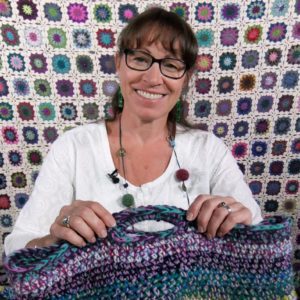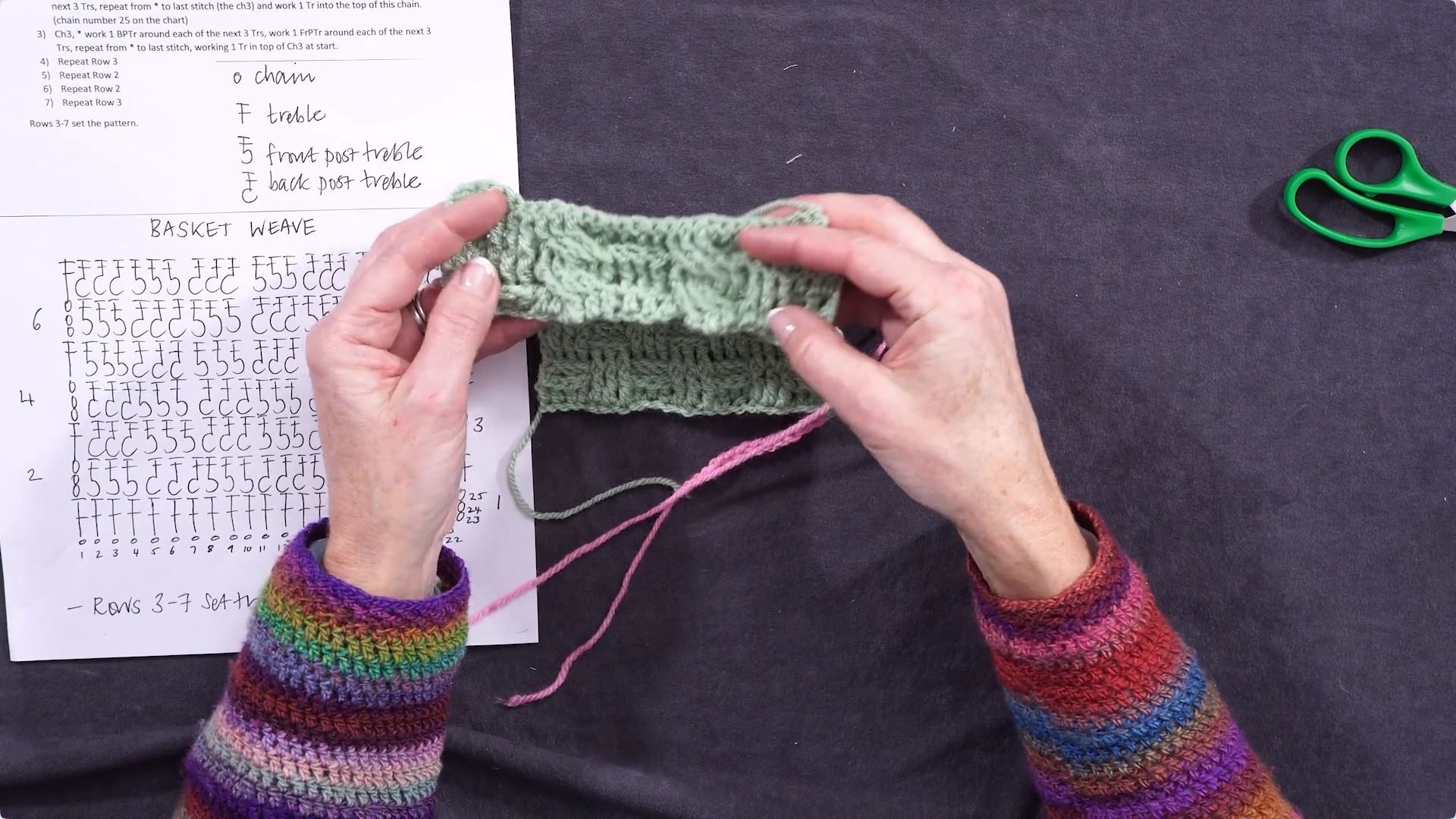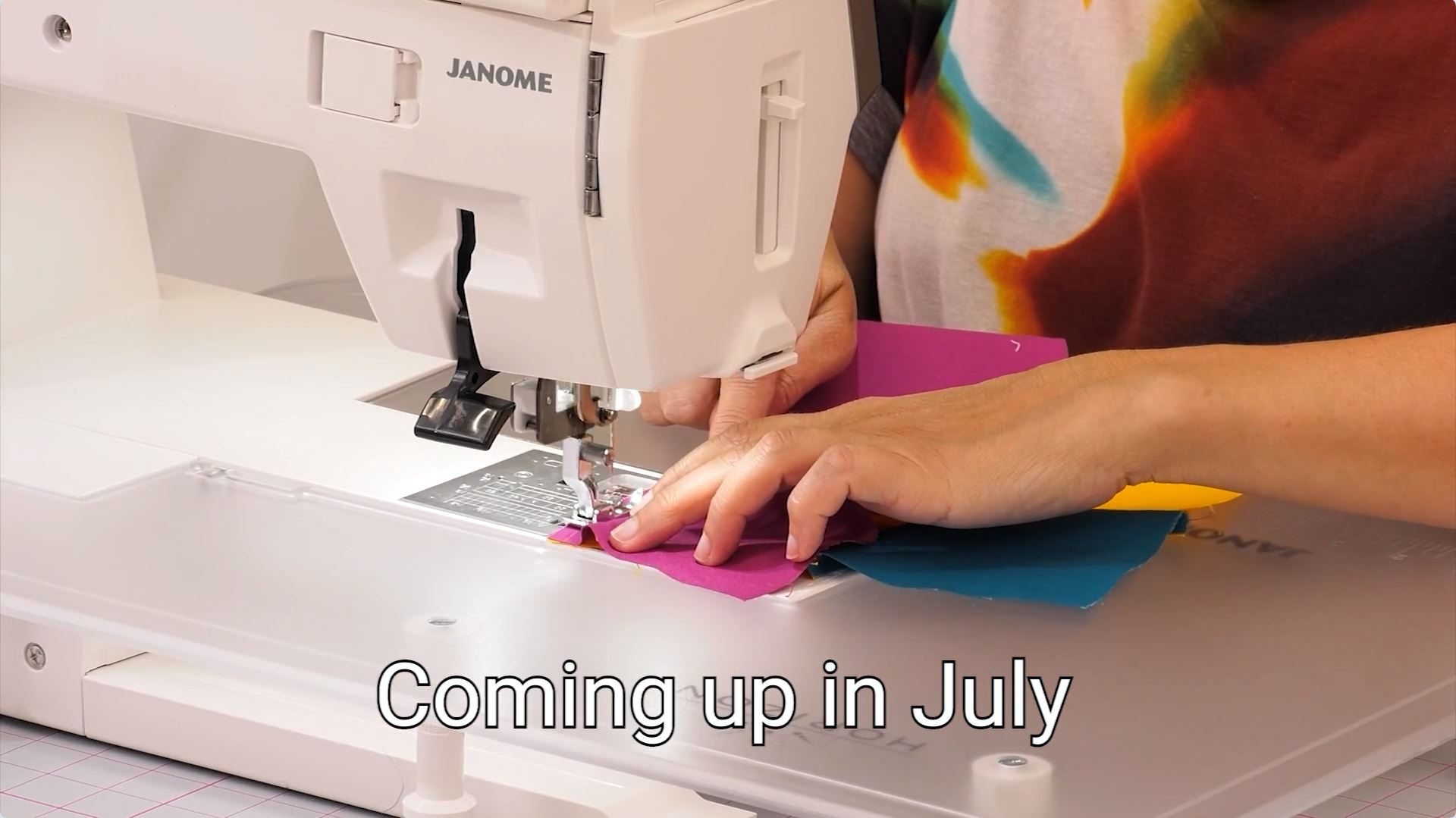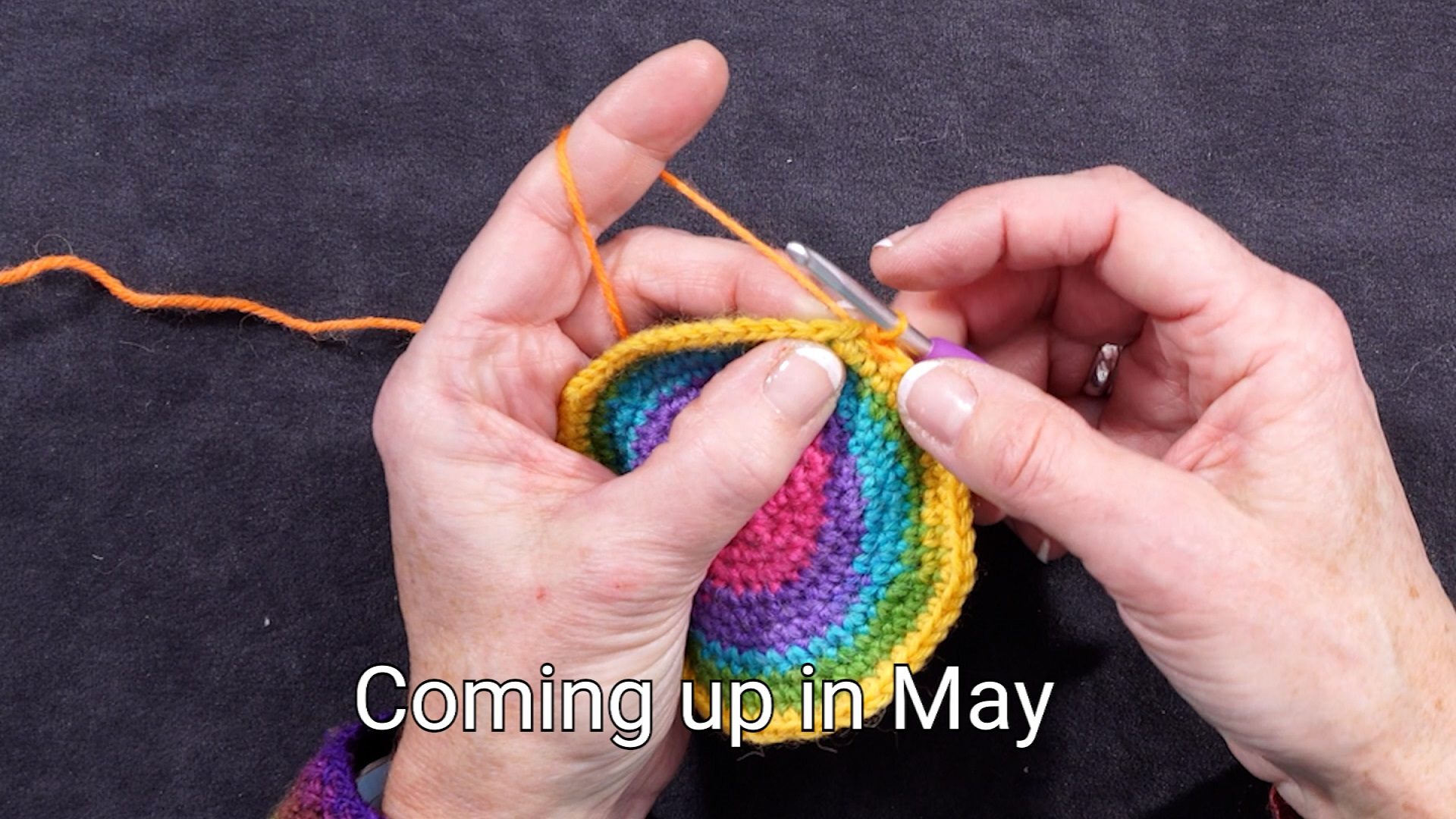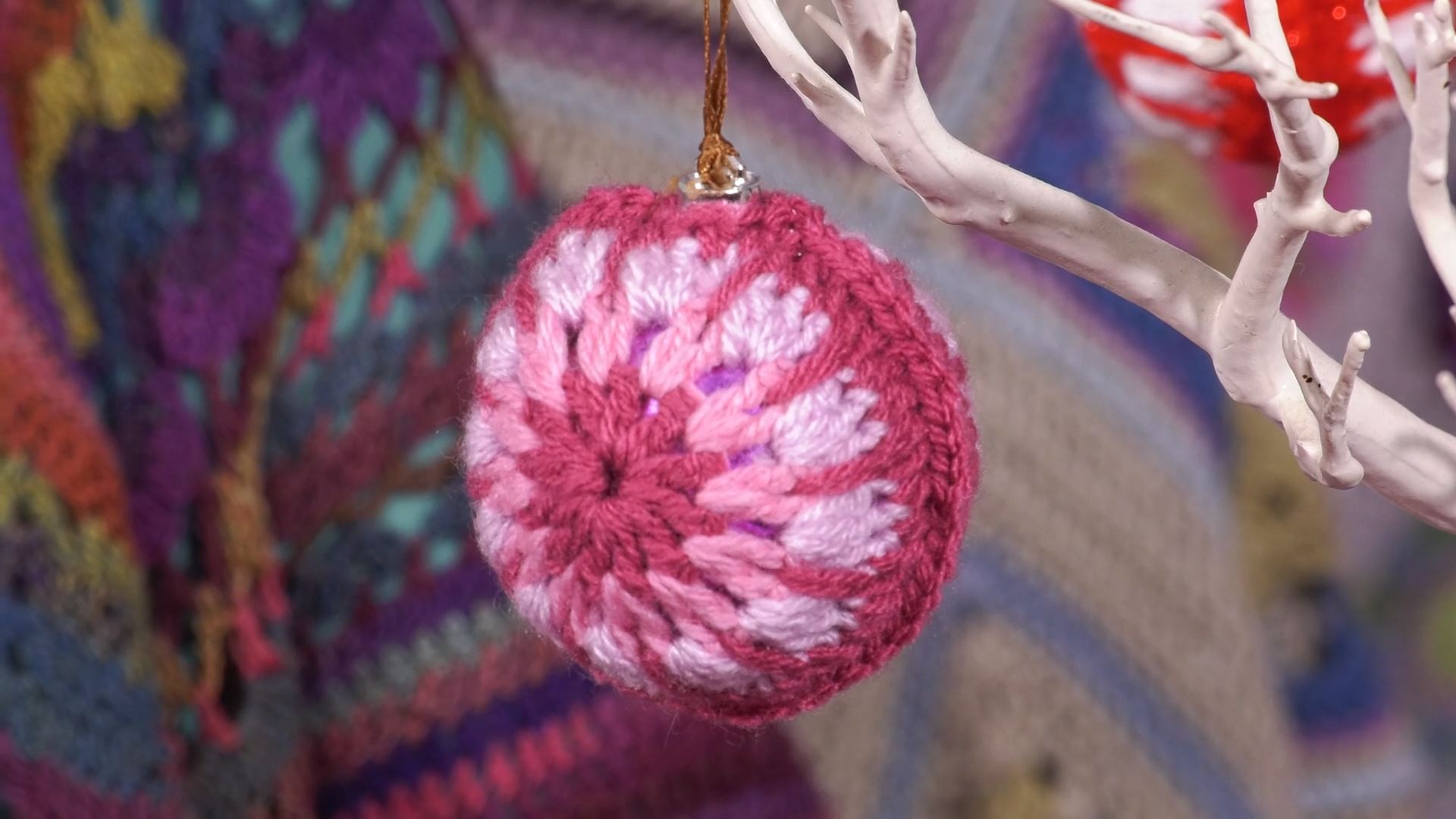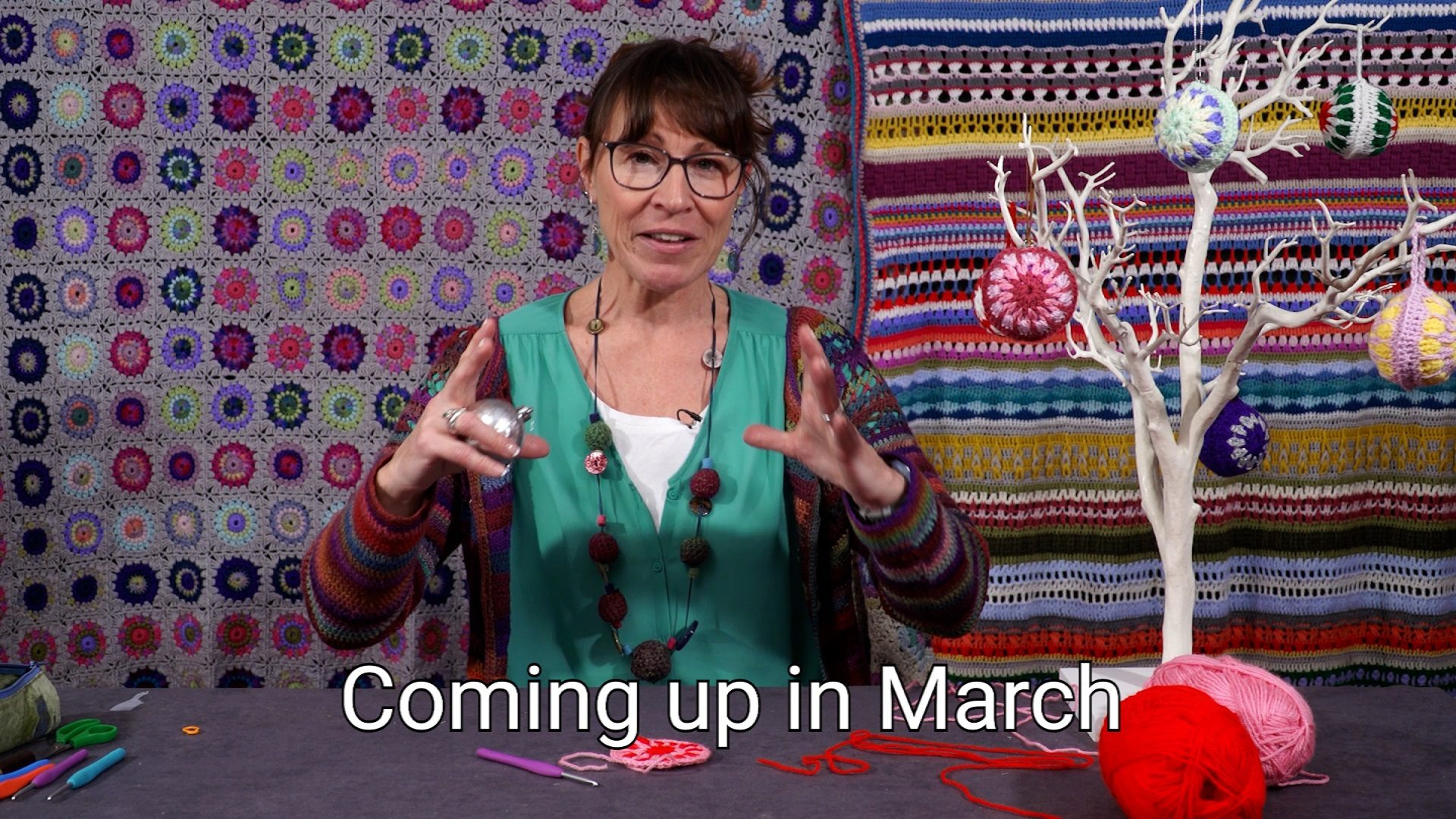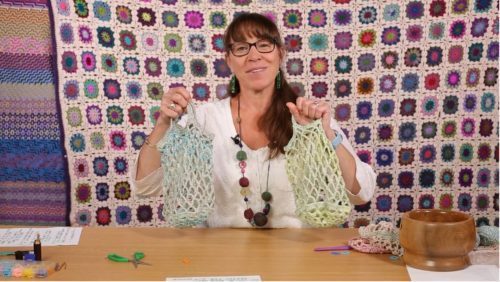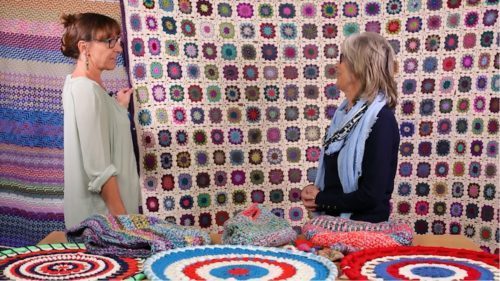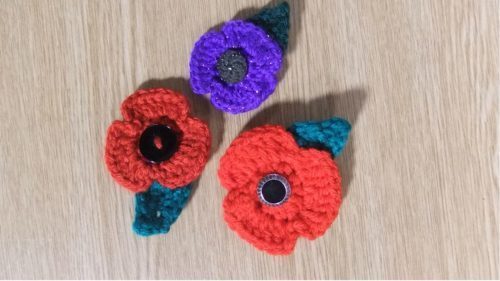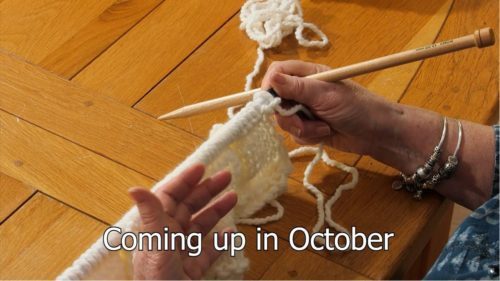About Gaynor
Gaynor is a crochet-obsessed teacher and pattern designer from Wokingham in Berkshire.
She learned to knit and crochet as a child, trained and worked as a French teacher for over 10 years, and then picked up her hook again 10 years ago. Gaynor jokes that she is “lucky enough to call myself a full-time hooker…”
In 2012, Gaynor set up The Barkham Hookers crochet group with a few friends in her living room. They now run 4 group sessions a week as well as many regular private lessons with over 600 members on Facebook alone. You can find them on Facbook via The Barkham Hookers’ Charity Group, where many of their charity projects can be seen.
She is very proud of the fact that The Barkham Hookers raised over £60,000 for various national and international charities, £52,000 of that for the Royal British Legion Poppy Appeal. Click here to watch Gaynor share a quick and easy method for crocheting a poppy.
Gaynor loves designing and making blankets, many of which can be found as free CALs (crochet-a-longs) on her blog: Confessions of a Barkham Hooker. During the pandemic, she designed the Coronavirus CAL, posting a new section daily then weekly with colourful pictures and detailed notes.
Signature Technique
Crochet Blankets incorporating a variety of patterns and colours
Top Tips
- Crochet is very forgiving. Don’t be afraid to adjust or change the pattern to suit your needs or likes. And remember, if in doubt pull it out!
- Use a larger hook to work a long foundation chain to avoid it curling up.
- If you work quite loosely choose a slightly smaller hook than advised and a larger hook if you work tightly.
- When working in rows do not forget to work into the last stitch – – which is probably the chain 2/3 made at the start of the previous row.
- Use military buttons as the centre in poppies to add something special.
- If you are working with several balls of yarn, chuck them on the floor and let gravity help you keep them untangled.
Videos
Patterns
Posts
How do I avoid having a birds nest on the back of my quilt?
A birds nest is that ravel of thead that often happens when you start quilting part way into a project and when you are making a quilt you need the back of it to be as beautiful as the front. An easy way to do this is to pull that bottom thread up through the work so that you have it under control and then you can knot it off later.
What do you do with the thread ends when you are finished quilting?
Well the threads can be knotted and then hidden in the wadding. You can see how by watching Knotting Off Your Threads and here is what one happy viewer had to say: I have just watched 'Knotting Off Your Threads' with Valerie and would like to say thank you for sharing such a great method. I was taking both threads to the back, tying them off and then weaving in the ends which seemed to take longer than the actual quilting!
What wadding should I use?
Question from Janice: Hello again, well I've finished the topping for my log cabin quilt and now am about to sandwhich it together. I have Heirloom cotton batting and good old fashioned polyester batting. Having been slightly put of by the instructions on the heirloom batting, although that was my original choice, can you tell me - do I really need to rinse in tepid water & dry as recommended on the packaging for shrinkage or can I just apply it as it comes after opening & flattened overnight.
I have never used this type but heard Jennie say on C&C it was fabulous so ofcourse I bought it.

